

One-pagers and Sketchnotes have become incredibly popular in recent years, and it’s easy to see why. Rather than just jotting down words on a page, students use one-pagers to visually represent key points and takeaways. They’re fun to create and have a real impact on memory and comprehension. Here’s how to use them, plus lots of terrific one-pager examples to inspire you and your students.

One-pagers invite students to think deeply about a text and produce a single page to represent its most important aspects. They usually include some images, doodles, or other graphic elements, giving them the alternate name Sketchnotes. One-pagers are often full of color and may include more images than words, depending on the student. They’re most commonly used in ELA classrooms but can be helpful in other subjects too.
This note-taking concept was pioneered by AVID, a group that seeks to prepare all students for college. As one-pagers caught on, teachers found that students who used one-pagers made a deeper connection to the text and had better retention of key concepts. AVID’s guidelines encourage students to share their one-pagers with one another, helping to inspire learning in a variety of visual ways.
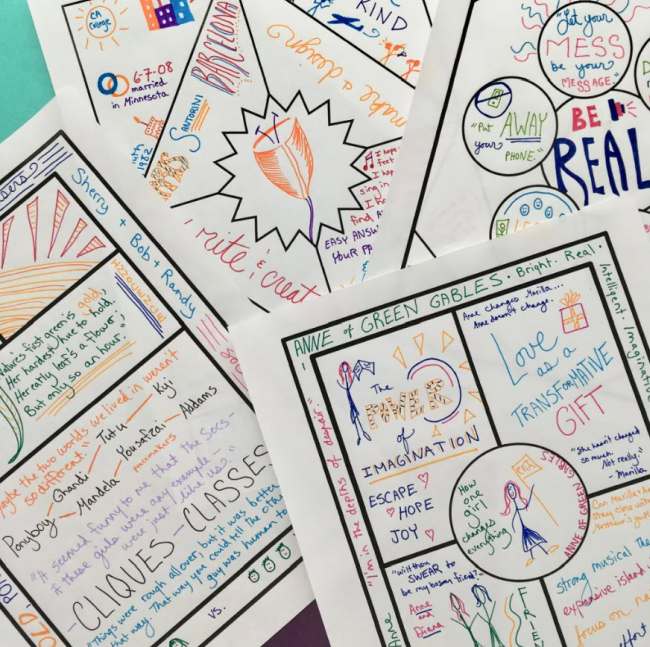
One problem teachers face when encouraging kids to use one-pagers is that some students don’t feel “artistic” enough. They may also not know where to start. When teaching kids to use Sketchnote one-pagers, provide more direction at first. Start by showing kids one-pager examples (see below). Ask what they notice about these Sketchnotes. Some characteristics they might note:
Some kids will take the idea and run with it right off the bat. Others will need a little more help. In this case, offering one-pager templates like these from Spark Creativity can really help.
You can also share these specific directions from AVID, which provide guidance on what to include on each page. Giving students a clear list of what to cover will increase confidence and free them up to be creative. For example, in English Language Arts, you might ask students to:
Here are some outstanding one-pager examples on a variety of texts and topics. Note the incredible array of styles, which you can use to remind kids that there’s no one right way to use Sketchnotes. Encourage them to be creative!

We like this one-pager example because it shows students that you don’t need to be an expert artist to create something meaningful.

Here’s an example of how a template can provide students with strong guidance to get them started. This one-pager has more words than illustrations, but it’s still colorful and engaging.

One-pagers can go digital too! Try a whiteboard tool like Jamboard to make the process easy.
ADVERTISEMENT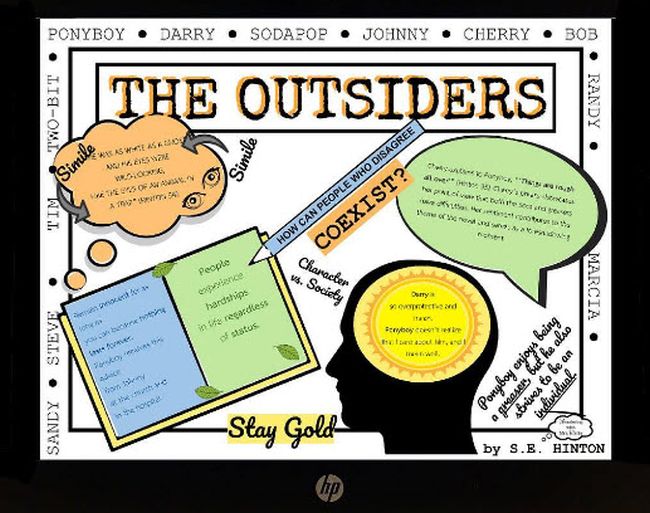

Take a look at these two different one-pager examples, one handwritten and one digital—and both effective

Here’s another terrific way to use a template. Students can sketch the symbol, then add in handwritten notes for more info.

This note-taking option really gives artistic students a chance to shine! Just make sure they add enough information (graphic or text) to help them make connections with what they’ve read.
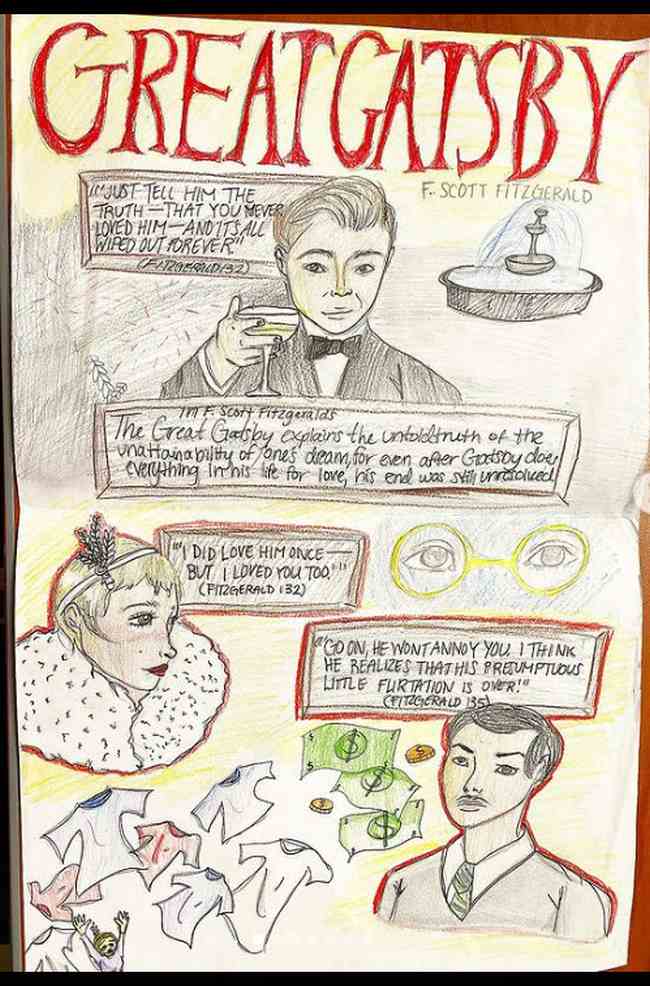
Sketching characters from books can bring them to life for readers. Highlight a few quotes that truly express their personalities.

Students can use one-pagers to demonstrate what they know. They make interesting alternatives to essays or book reports.
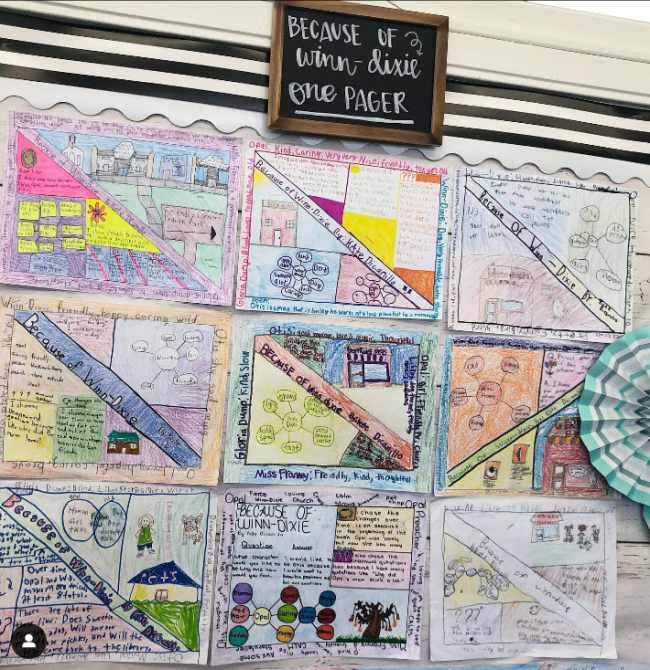
Note that although each student used the same basic template (hand-drawn too, so don’t worry about making copies!), they each created something different and meaningful to themselves.
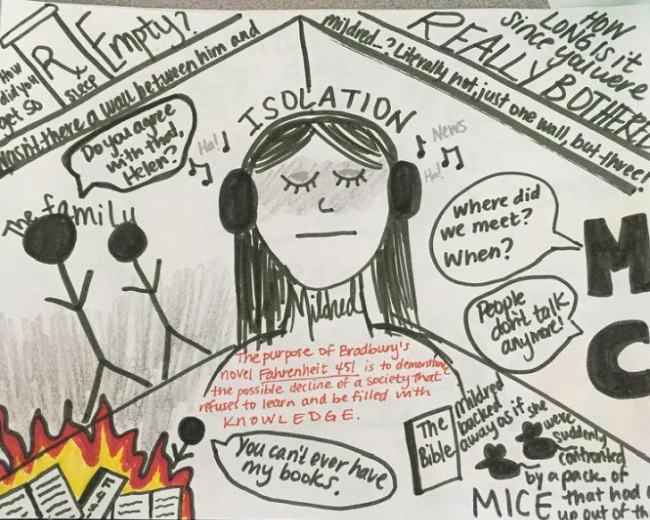 Fahrenheit 451 one-pager with basic illustrations (One-Pagers Examples)" width="650" height="520" />
Fahrenheit 451 one-pager with basic illustrations (One-Pagers Examples)" width="650" height="520" />
Encourage students to add at least some images to their Sketchnotes, even if they’re as simple as stick figures or outlines. This engages different parts of the brain than just writing words does, and it deepens recall.
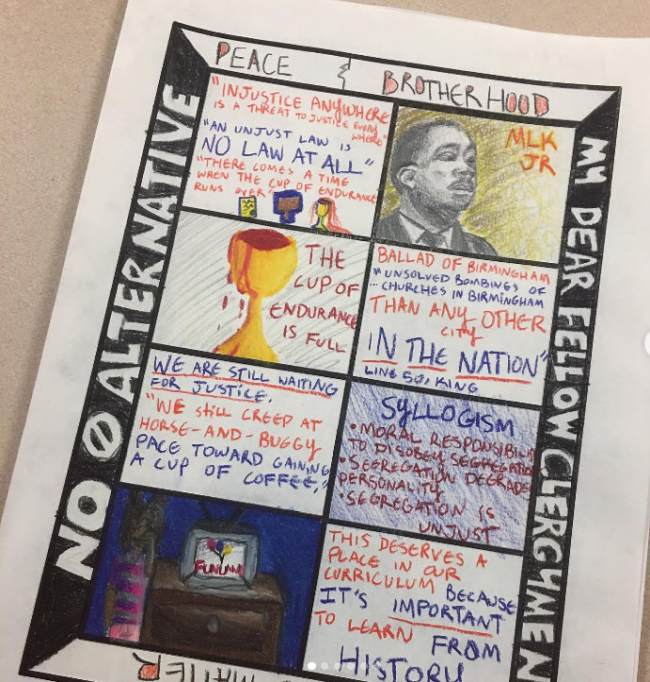 Letter from a Birmingham Jail one-pager with illustrations and handwritten text (One-Pager Examples)" width="650" height="682" />
Letter from a Birmingham Jail one-pager with illustrations and handwritten text (One-Pager Examples)" width="650" height="682" />
Even when writing text, try to use a variety of colors and styles for emphasis. Just shading a background can draw the eye to something important.

One-pagers are terrific for comparing and contrasting information, like this one comparing how geography affects the lives of people in China and India.

We love the idea of adding a word cloud to a one-pager! If you’re making a digital version, try these word cloud generators.
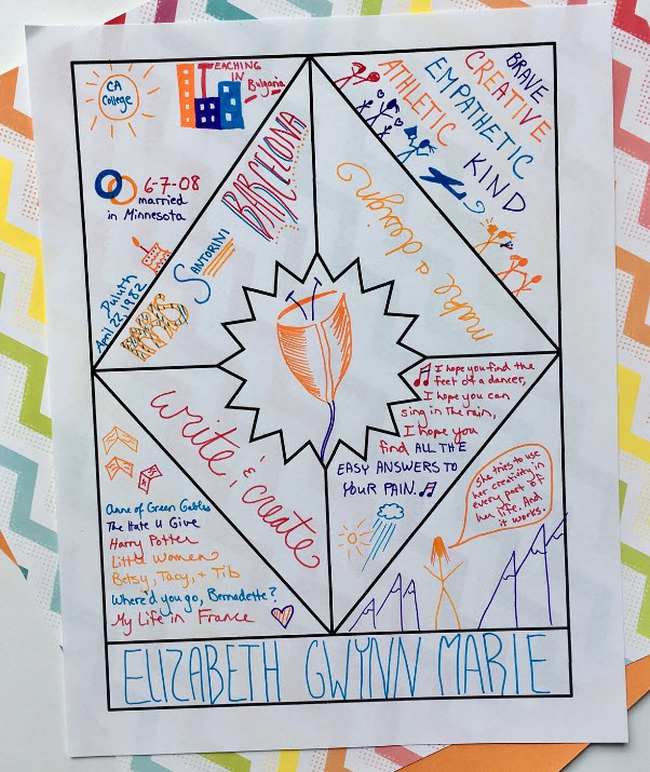
One-pagers are such a fun way to do a getting-to-know-you activity on the first day of class.
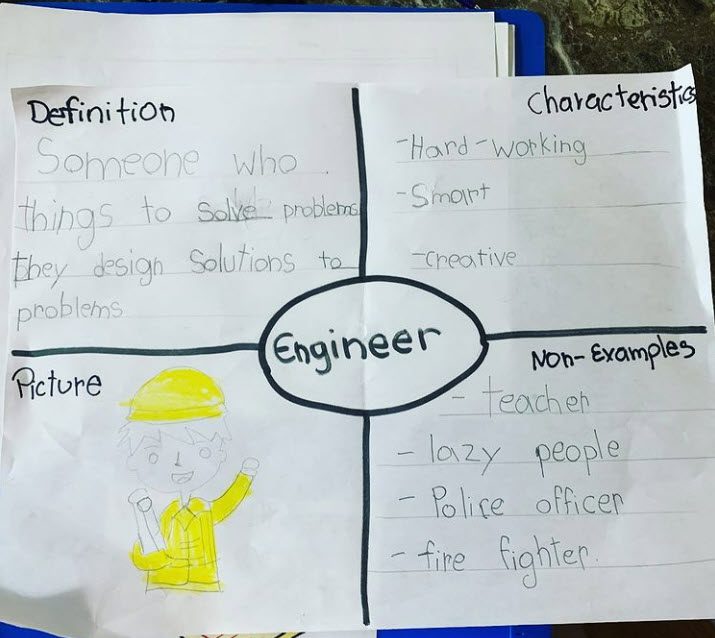
The Frayer model graphic organizer is a terrific lead-in to more creative one-pagers, and a nice way to get students more comfortable with the format.

The main image choice can set the tone for an entire one-pager analysis.
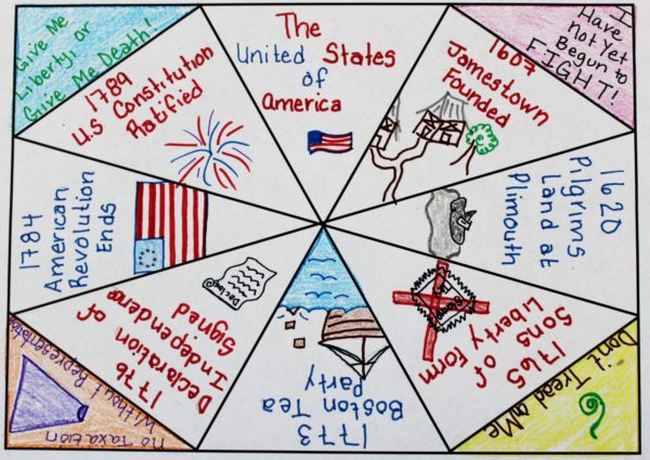
Don’t be afraid to try one-pagers in any class, for any topic!